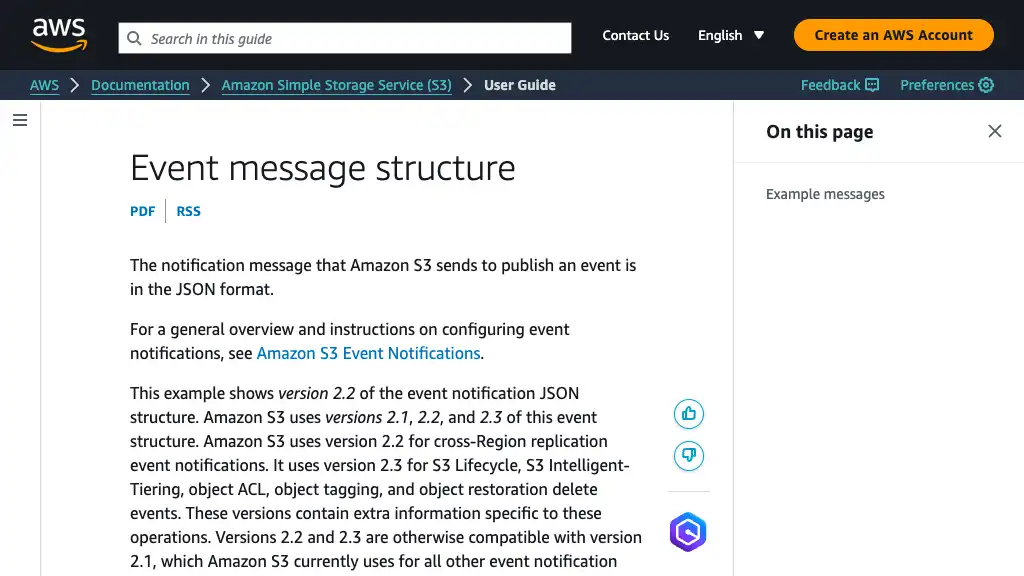Avoiding Pitfalls with s3:TestEvent in AWS S3 Notifications

Introduction
When configuring event notifications for Amazon S3 buckets, s3:TestEvent messages are automatically sent by S3. Proper handling of these test messages is essential to avoid potential issues in your systems.
When you configure an event notification on a bucket, Amazon S3 sends a test message with the
s3:TestEvent.
Creating AWS Resources
Follow these steps to create the necessary AWS resources for testing S3 notifications:
CloudFormation Template
Use the following CloudFormation template to create an S3 bucket with an associated SQS queue: (line 11-14)
AWSTemplateFormatVersion: "2010-09-09"
Description: Example of CloudWatch events not queueing to SSE SQS
Resources:
Bucket:
Type: AWS::S3::Bucket
Properties:
BucketEncryption:
ServerSideEncryptionConfiguration:
- ServerSideEncryptionByDefault:
SSEAlgorithm: AES256
NotificationConfiguration:
QueueConfigurations:
- Event: 's3:ObjectCreated:Put'
Queue: !GetAtt Queue.Arn
PublicAccessBlockConfiguration:
BlockPublicAcls: true
BlockPublicPolicy: true
IgnorePublicAcls: true
RestrictPublicBuckets: true
Queue:
Type: AWS::SQS::Queue
Properties:
QueueName: s3-event-notification-test-queue
ReceiveMessageWaitTimeSeconds: 20
QueuePolicy:
Type: AWS::SQS::QueuePolicy
Properties:
PolicyDocument:
Version: '2008-10-17'
Statement:
- Effect: Allow
Principal:
Service: s3.amazonaws.com
Action:
- SQS:SendMessage
- SQS:ReceiveMessage
Resource: !GetAtt Queue.Arn
Condition:
StringEquals:
aws:SourceAccount: !Ref AWS::AccountId
Queues:
- !Ref Queue
Deploy the CloudFormation Stack
Deploy the stack using the following command:
aws cloudformation deploy --template-file template.yaml --stack-name s3-event-notification-test
Testing the Configuration
To verify the setup, check the SQS messages using the following command:
aws sqs receive-message --queue-url https://sqs.ap-northeast-1.amazonaws.com/{AccountId}/s3-event-notification-test-queue
You should observe the s3:TestEvent message in the output, even if no objects have been added to the bucket.
{
"Messages": [
{
"MessageId": "...",
"ReceiptHandle": "...",
"MD5OfBody": "...",
"Body": "{\"Service\":\"Amazon S3\",\"Event\":\"s3:TestEvent\",\"Time\":\"2020-12-29T18:53:47.874Z\",\"Bucket\":\"s3-event-notification-test-bucket-xxxxxxxx\",\"RequestId\":\"...\",\"HostId\":\"...\"}"
}
]
}
Cleaning Up Resources
After completing the testing, clean up the resources to avoid unnecessary costs:
aws cloudformation delete-stack --stack-name s3-event-notification-test
Conclusion
Properly handling the s3:TestEvent message is crucial for ensuring the reliability of your S3 notification system. Failure to manage these messages can lead to misinterpretations or unintended consequences in downstream systems.
Happy Coding! 🚀

